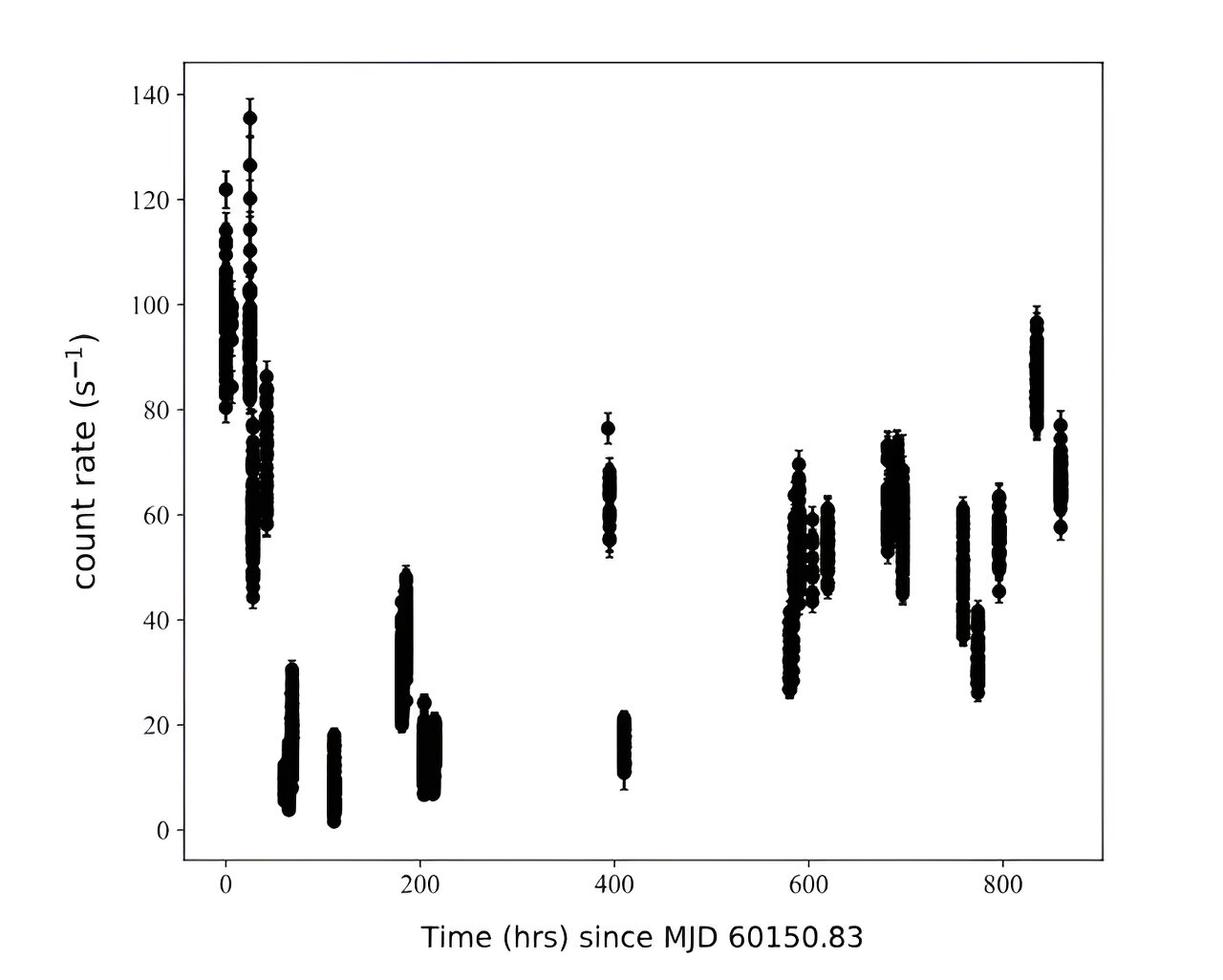Light curve of nova V1716 Sco observed with NICER with epochs of 10 seconds, from July 25, 2023 to August 30, 2023. Source: Wang et al., 2024.
Astronomers from China and Taiwan have observed the nova outburst of V1716 Sco that occurred last year using several X-ray and gamma-ray space observatories. Results of the observation campaign, presented on June 27 on the preprint server arXivprovide essential information about the evolution of this nova.
A nova is a star that experiences a sudden increase in brightness and slowly returns to its original state, a process that can take many months. Such an outburst is the result of the accretion process in a close binary star system with a white dwarf and its companion.
V1716 Sco, also known as Nova Sco 2023, was detected when it erupted on April 20, 2023, at a magnitude of 8.0. Follow-up observations of V1716 Sco spectroscopically confirmed that it was a classical (Fe II) nova.
Now, a team of astronomers led by Huihui Wang of Henan University of Science and Technology in Luoyang, China, has studied V1716 Sco in the X-ray and gamma-ray bands using NASA’s Swift, NuSTAR and Fermi spacecraft, as well as the Neutron star Interior Composition Explorer (NICER) aboard the International Space Station.
“We performed a joint analysis of NuSTAR, Swift, NICER, and Fermi-LAT observations of nova V1716 Sco,” the researchers wrote in the paper.
The observations found that the gamma-ray emission started one day after the optical outburst of V1716 Sco, with a test statistic (TS) value of 70. The duration of this gamma-ray activity with a TS value above 4.0 lasted for 40 days. In addition, harder X-ray emission was also observed by Swift one day after the optical outburst.
The findings make V1716 Sco the first classical nova where X-ray detection by Swift occurs simultaneously with gamma-ray emission, and the fourth classical nova where gamma-ray emission occurs simultaneously with emission of harder X-rays from NuSTAR data.
By analyzing the X-ray spectrum, the researchers found that the hardness ratio decreased rapidly over time, and that the observed emission entered the supersoft source (SSS) phase about 40 days after the nova outburst. Furthermore, NICER data allowed the astronomers to detect a quasi-periodic oscillation (QPO) in the SSS phase with a period of 79.10 seconds.
In an attempt to explain the origin of the detected QPO, the authors of the paper point to the spin modulation of the white dwarf as the most plausible hypothesis. However, they noted that the period of the modulations is not stable with time. This could mean that the hot spot region on the surface of the white dwarf could shift with time, or that the periodic modulation could come from another mechanism, such as a stellar oscillation.
More information:
H. -H. Wang et al, X-ray and gamma-ray study for the 2023 nova outburst of V1716 Sco, arXiv (2024). DOI number: 10.48550/arxiv.2406.19233
Information about the magazine:
arXiv
© 2024 Science X Network
Quote: Nova eruption of V1716 Sco inspected in X-rays and gamma rays (2024, July 4) Retrieved July 5, 2024 from https://phys.org/news/2024-07-nova-eruption-v1716-sco-rays.html
This document is subject to copyright. Except for fair dealing for private study or research, no part may be reproduced without written permission. The contents are supplied for information purposes only.
